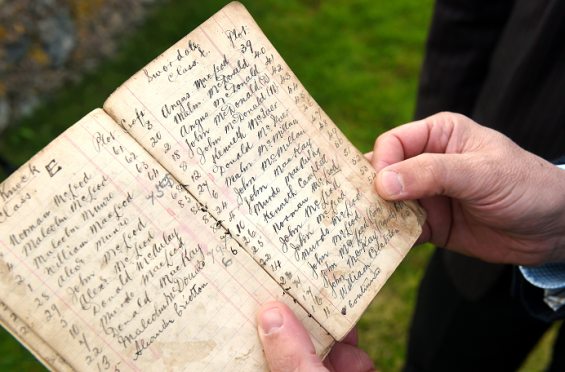An ancient record book, associated with an historic island cemetery, has been found in a bookshop in Edinburgh.
The important document is now helping locals properly understand the old burial ground at Aignish on Lewis.
And it is also being used to help people from around the world track down their ancestral graves in the islands.
The book holds the records for the old cemetery at Aignish, which sits a few miles east of Stornoway in the Point district of Lewis.
The traditional burial site was replaced by a newer amenity in the 20th century – and it is thought the rediscovered record book dates back to the 18th century.
Many of the gravestones are so old that their markings have been completely worn away.
The book holds information on the plots which were allocated to every family in the Point district.
It was found by Broad Bay councillor Donald Crichton’s father-in-law in an old book shop in Edinburgh
He said: “It’s a really important document. My father-in-law John MacAskill came across it in an old book shop which was shutting down in Edinburgh.
“He is from Point as well and he was able to look in the book and under his own home village and saw his own grandfather’s records in terms of the plot they had in the graveyard.
“It meant a lot to him and when it was brought to his attention, he was just astonished.
“We have no idea how it ended up there in the first place.
“But it’s good because it can be restored back to its rightful place with the records of the current cemetery.”
The consecrated land is an important part of the history of Lewis with 17 chiefs of the Clan MacLeod buried in its grounds.
The church, which is now a ruin, is also a historic site and is said to have been established by St Caton, a disciple of St Columba.
A committee now oversees the cemetery and is working to try and build up a picture of the layout.
Councillor Alasdair MacLeod has been working on preserving the book by taking copies of the document.
He explained: “Record keeping was very haphazard. This is amazing, because, historically, it’s very valuable.
He added: “There’s a lot of people who have links with the island whose families have moved away.
“They come back and it’s a very symbolic thing for them if they are able to go to their family’s lair [burial place].”
